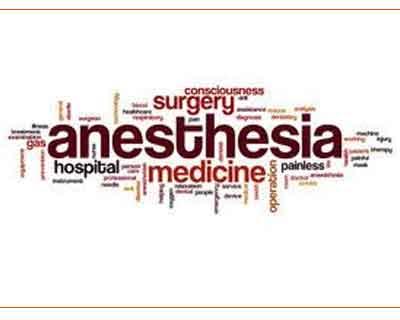- Home
- Editorial
- News
- Practice Guidelines
- Anesthesiology Guidelines
- Cancer Guidelines
- Cardiac Sciences Guidelines
- Critical Care Guidelines
- Dentistry Guidelines
- Dermatology Guidelines
- Diabetes and Endo Guidelines
- Diagnostics Guidelines
- ENT Guidelines
- Featured Practice Guidelines
- Gastroenterology Guidelines
- Geriatrics Guidelines
- Medicine Guidelines
- Nephrology Guidelines
- Neurosciences Guidelines
- Obs and Gynae Guidelines
- Ophthalmology Guidelines
- Orthopaedics Guidelines
- Paediatrics Guidelines
- Psychiatry Guidelines
- Pulmonology Guidelines
- Radiology Guidelines
- Surgery Guidelines
- Urology Guidelines
Updated 2019 Guidelines for safe anesthesia in magnetic resonance units

Association of Anaesthetists have updated the guidelines to offer practical support for the provision of safe anaesthesia within the MR scanner. This is an update on 2002 and 2010 guidelines.
Magnetic resonance imaging is a widely used diagnostic tool used to investigate many conditions; anaesthesia has been used to facilitate MR scanning since the 1980s. There has been an increase in the number of units providing anaesthesia for magnetic resonance imaging and the strength of magnetic resonance scanners, as well as the number of interventions and operations performed within the magnetic resonance environment.
More devices and implants are now magnetic resonance imaging conditional, allowing scans to be undertaken in patients for whom this was previously not possible. There has also been a revision in terminology relating to magnetic resonance safety of devices. These guidelines have been put together by organisations who are involved in the pathways for patients needing magnetic resonance imaging. They reinforce the safety aspects of providing anaesthesia in the magnetic resonance environment, from the multidisciplinary decision making process, the seniority of anaesthetist accompanying the patient, to training in the recognition of hazards of anaesthesia in the magnetic resonance environment.
For many anaesthetists this is an unfamiliar site to give anaesthesia, often in a remote site. Hospitals should develop and audit governance procedures to ensure that anaesthetists of all grades are competent to deliver anaesthesia safely in this area.
Major Recommendations are -
Service organization and training
- All hospitals providing a service for anaesthesia within the MR unit should have a lead anaesthetist responsible for provision of anaesthesia for MRI.
- Training should be provided for all grades of anaesthetist delivering anaesthesia in this remote area; all anaesthetists should have an understanding of the hazards involved in anaesthetising a patient in the MRI unit.
- Anaesthesia/sedation for a patient needing an MRI scan, including intensive care unit (ICU) patients, should take into account the patient's pathophysiological status and the remote location of the MRI unit.
- Whenever possible, anaesthesia in remote sites should be provided by appropriately experienced consultants.
- When care is delegated to a trainee or Specialty and Associate Specialist (SAS) doctor, they should have the appropriate competencies and level of training.
- It is not acceptable for inexperienced staff, unfamiliar with the MR environment, to manage a patient in this environment, particularly out‐of‐hours.
- Patients must be accompanied to the scanner by appropriately trained staff members, and if an anaesthetic machine is being used, then the anaesthetist should be supported throughout by an anaesthetic assistant who should be suitably skilled, trained and familiar with the anaesthetic requirements.
Patient and staff safety
- All patients and staff must be screened for the presence of implants and devices that may be a contraindication to a safe scan. The referring team should discuss the safety of the devices with the MR Responsible Person and the anaesthetist to plan a suitable management strategy.
- Anyone remaining in the scanning room should be provided with ear protection during scanning.
- The MRI for patients should only be undertaken if the diagnostic benefit outweighs the risk. This discussion must involve the multidisciplinary team, particularly for a patient on the ICU.
- The MR safety checklists for general anaesthesia, intra‐operative MRI and for transfer of ICU patients should be used in conjunction with the World Health Organization (WHO) checklist.

Disclaimer: This site is primarily intended for healthcare professionals. Any content/information on this website does not replace the advice of medical and/or health professionals and should not be construed as medical/diagnostic advice/endorsement or prescription. Use of this site is subject to our terms of use, privacy policy, advertisement policy. © 2020 Minerva Medical Treatment Pvt Ltd